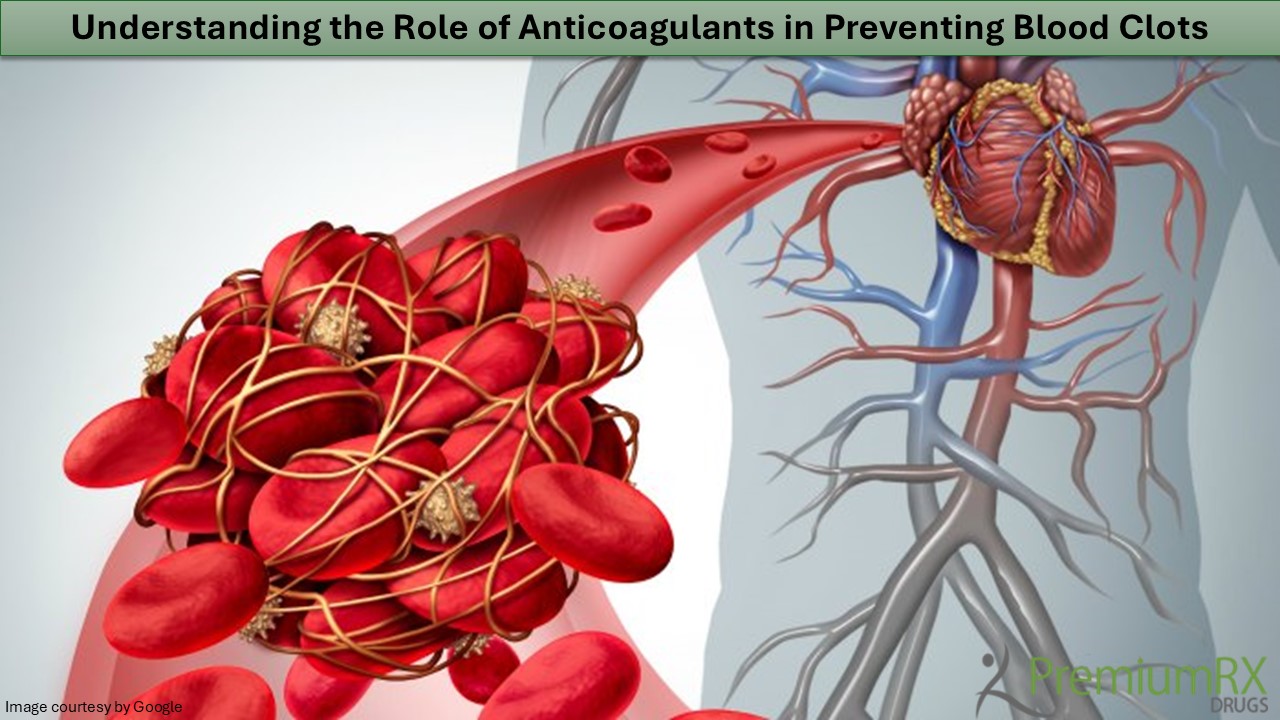Anticoagulants are drugs that reduce blood clotting in an artery vein or the heart. Healthcare specialists prescribe these to help prevent heart attacks and strokes caused by blood clots. Blood clots can cause blockages in the flow of blood to your heart or your brain, causing a stroke or heart attack. This article will explore anticoagulant drugs’ role in preventing blood clots, their mechanisms, types, and potential risks.
Clinical applications
Oral anticoagulants are taken orally in the form of pills. Anticoagulants vs blood thinners are always a topic of discussion, but here, it is important to understand that both are the same. They are commonly recommended for long-term prevention and management of conditions such as atrial fibrillation (an irregular heart rhythm), deep vein thrombosis (blood clot in the legs), and pulmonary embolism (blood clot in the lungs). Notable examples include Warfarin and the more recently developed anticoagulant medications like apixaban, rivaroxaban, and dabigatran, which offer several advantages, including predictable dosing, fewer interactions with food and other medications, and a reduced requirement for regular monitoring compared to Warfarin. These blood thinner meds are often used in acute medical situations, such as during pregnancy, to prevent clot formation rapidly.
Anticoagulants are important in preventing and treating various conditions, including atrial fibrillation. Individuals with atrial fibrillation have an irregular heartbeat that increases the risk of clot formation. Anticoagulant drugs are effective at reducing the risk of stroke in these patients by preventing blood clots from developing in the heart and traveling to the brain. Those with mechanical heart valves are at a high risk of clot formation.
Mechanism of action
Blood thinners work by interfering with the body’s blood clotting process. They are discovered in a way that they target different steps in the cascade of clotting, a series of biochemical reactions that happen when a blood vessel is injured. The main modes of action for anticoagulants include:
Inhibition of clotting factors: Blood clotting medications can target specific clotting factors involved in forming blood clots. For example- Warfarin interferes with vitamin K, an essential component for the synthesis of clotting factors. Heparin inhibits thrombin, a key enzyme in the clotting cascade.
Platelet aggregation inhibition: Some blood thinners, such as clopidogrel and aspirin, prevent platelets from clumping together, thus reducing the risk of clot formation.
Types of Anticoagulants
Anticoagulants are classified into several categories based on their mode of action and route of administration.
Vitamin K agonists: Warfarin, the most widely used oral anticoagulant, falls into this category and interferes with the liver’s production of vitamin K-dependent clotting factors.
Heparins: Heparin and low molecular weight heparins, including enoxaparin and dalteparin, are commonly used injectable blood thinners. They function by enhancing the activity of thrombin, a natural anticoagulant protein that inhibits thrombin and other clotting factors.
Direct oral anticoagulants: These include rivaroxaban, dabigatran, endoxaban, and apixaban, which are newer oral anticoagulants that directly inhibit specific clotting factors. They provide convenient dosing without the requirement for frequent monitoring compared to Warfarin.
Usage instructions
According to healthcare experts, people should take oral anticoagulants once or twice daily, depending on the medication, at the same time each day. These come in different strengths. A healthcare specialist will provide information regarding the correct dose that suits you. Individuals should take dabigatran, Warfarin, and apixaban with water. Individuals can take edoxaban before or after consuming food, but they should take rivaroxaban alongside food. The length of the treatment depends on why it has been prescribed to you. In many cases, treatment will be lifelong.
Inhibition of clotting factors: Blood clotting medications can target specific clotting factors involved in forming blood clots. For example- Warfarin interferes with vitamin K, an essential component for the synthesis of clotting factors. Heparin inhibits thrombin, a key enzyme in the clotting cascade.
If you are unsure how to take the medicine, worried about a missed dose, or have taken too much of this medication, please consult your healthcare provider for advice.
Important things to consider when taking anticoagulants
You need to be aware of several things when taking blood thinners. If you are going to have surgery or endoscopy (a medical test), make sure your healthcare provider or surgeon is aware that you are following an anticoagulant therapy, as you should be advised to discontinue treatment for a short period. Speak to your healthcare provider before taking any other drugs, including prescription and over-the-counter medicines, as some drugs can affect how your anticoagulant works.
If you have been prescribed Warfarin, you must avoid significant changes in your eating and drinking patterns, as this can affect your medicine. Most blood thinners are not suitable for pregnant women. Talk to your healthcare specialist if you become pregnant or are planning for a baby while taking anticoagulants.
Side effects of anticoagulants
Blood thinner medications prevent life-threatening complications; they do not come without risks.
The most significant concern is the potential for bleeding. Since these medicines reduce the blood’s ability to clot, even minor injuries can result in excessive bleeding. It is important for individuals taking blood thinners to follow the healthcare provider’s instructions carefully and promptly report any unusual bleeding. Please consult your healthcare provider for more information on the side effects of blood thinners.
Conclusion
Anticoagulants have transformed the management and prevention of conditions associated with excessive blood clotting. By inhibiting clot formation, they tend to mitigate the risk of life-threatening complications such as heart attacks, strokes, and pulmonary embolism. Their usage requires careful consideration of each patient’s medical history and risk factors. As medical science advances, developing safer and more effective blood thinners remains an ongoing endeavor to safeguard lives and improve patient care quality.
Latest posts by Marie (see all)
- From Sparse to Stunning: Comparing Top Lash Serums Bimat, Careprost & Latisse - January 5, 2026
- Amiodar 200mg Tablet: Uses, Dosage, Side Effects & Safety Guide - December 24, 2025
- HCG 5000 IU Injection Online: Uses, Benefits, Dosage & Price - December 23, 2025




